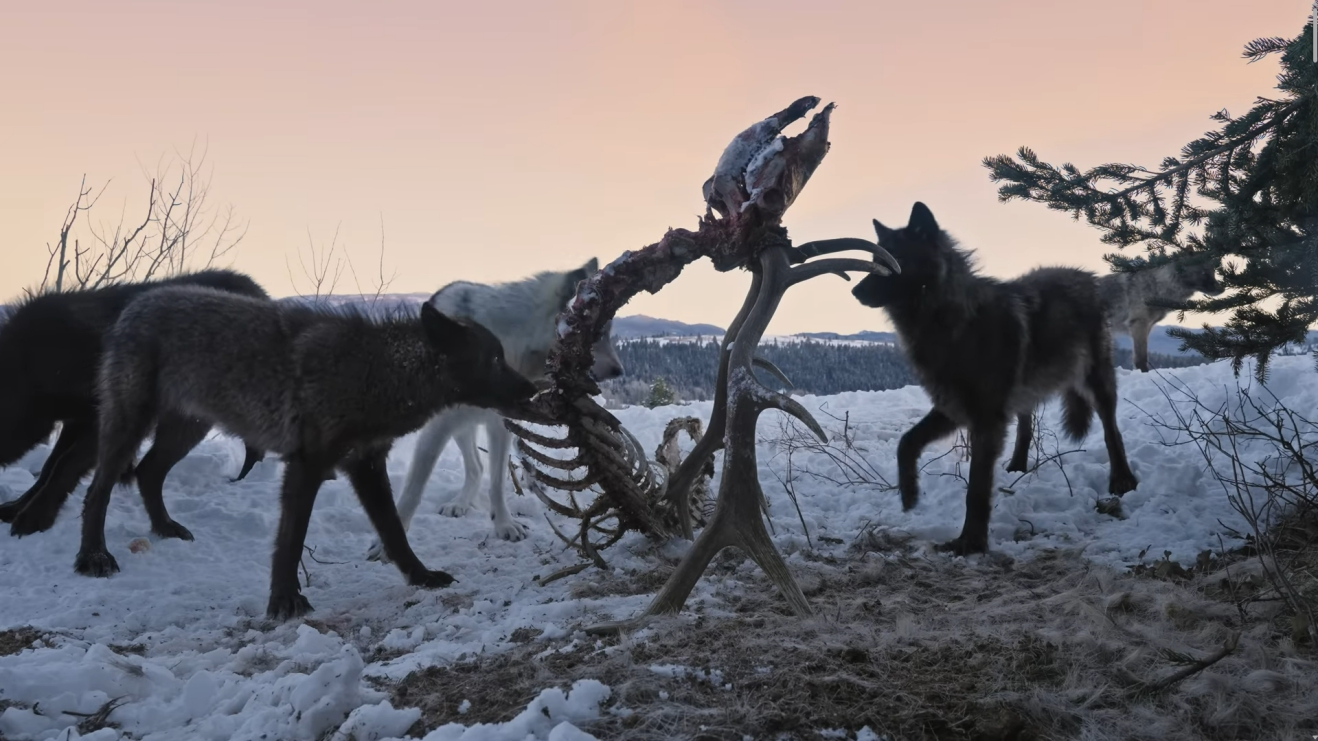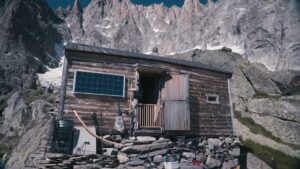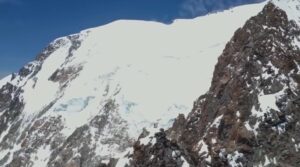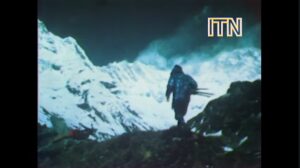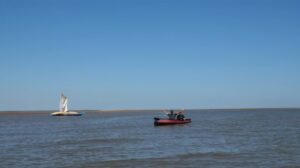Jake Davis is a professional wildlife filmmaker who has recently begun posting what he captures to YouTube. The title of his latest is descriptive: I Left $100K in Cameras on a Wolf Kill. Here’s What They Captured. It’s a deceptively simple premise. The footage Davis captures is the story of an entire ecosystem and a rare and intimate glimpse into the lives of wolves.

Wolves are a ‘keystone species,’ a vital part of the ecosystem in Yellowstone. Their reintroduction is a modern ecological success story. Photo: Screenshot
One day, Davis tells us in the introduction to the footage, he spotted a wounded bull elk. Davis realized he had stumbled into the immediate aftermath of a wolf hunt, and was now face to face with the victim. Knowing this presented a rare opportunity, Davis waited and watched. The next day, carrion birds flying overhead led him to the body of the elk.
Setting up the cameras, we get a behind-the-scenes look into the process of professional wildlife filmmaking. Davis explains his setup, placing cameras at different distances and angles to get different shots. To make sure they’re on when there’s activity, he sets them to be activated when a nearby device registers heat signatures– living creatures. Then he leaves.

The final camera placements. Leaving them is ‘a curious mix of emotions’ for Davis: excitement, but also the knowledge that what follows is out of his control. Photo: Screenshot
The afterlife of a bull elk
The birds are the first to arrive at the wolf kill. Various corvids hop about the corpse, and even a large golden eagle alights. Foxes join the gathering periodically. But after five days, the carcass is still largely intact — and no wolves have visited. But they have been spotted close by.
Davis faced a dilemma. The cameras needed to be serviced to ensure none of them had a dead battery or were buried in snow. But if Davis went out to refit them, he would scare away the wolves. Or he could trust luck, hope the batteries held out, and wait. Fate decided for him, closing the road with storms and accidents.
When he finally makes it out, the cameras are covered in snow. And wolves had visited.
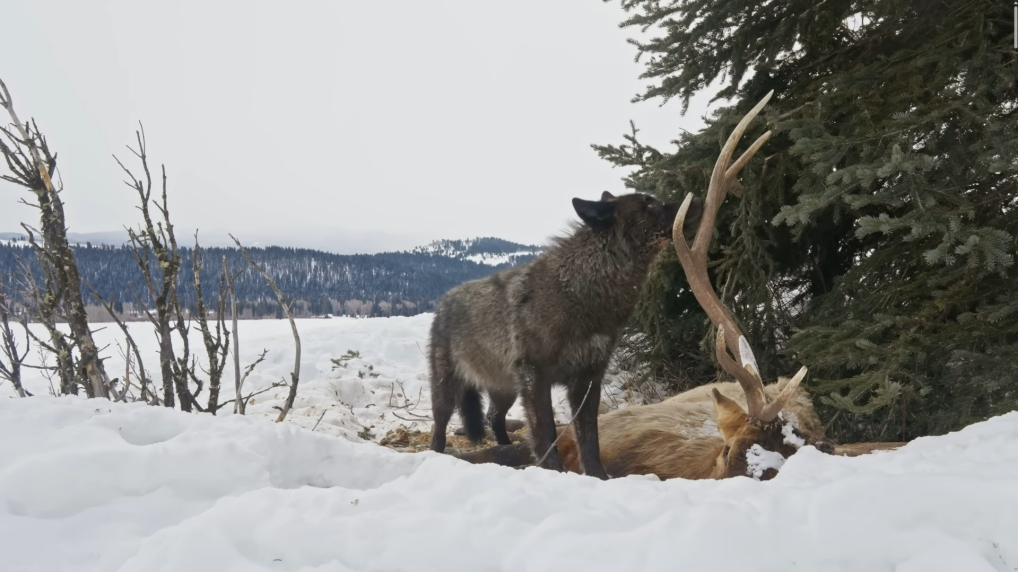
A lone black wolf, a young male, is the first to approach the body. The next day he brings a friend. Photo: Screenshot
Visit of the wolves
Two young black wolves had arrived to feed, then left again. Quickly, Davis replaced the batteries and memory cards on his cameras and replaced them. Two weeks later, he returned again, to a strange scene.
The elk was nearly eaten up and had also been dragged several yards. And one of the cameras was missing. Footage showed the black pair had returned, as had an older grey wolf, and finally an entire pack. They fed on the elk all night, though one of them took a break — to steal a camera and carry it off.
The wolves carried it away down the hill, biting at the case and the handle. When Davis is able to find it again, however, the memory card is intact, and we get a glimpse of the thief.

Footage captured by the stolen and chewed-on camera. Photo: Screenshot
The next day at sunset, the wolves return for the final time. As we watch them gnaw at the bones, it is, as Davis says, “a window into a world that’s never seen.”
